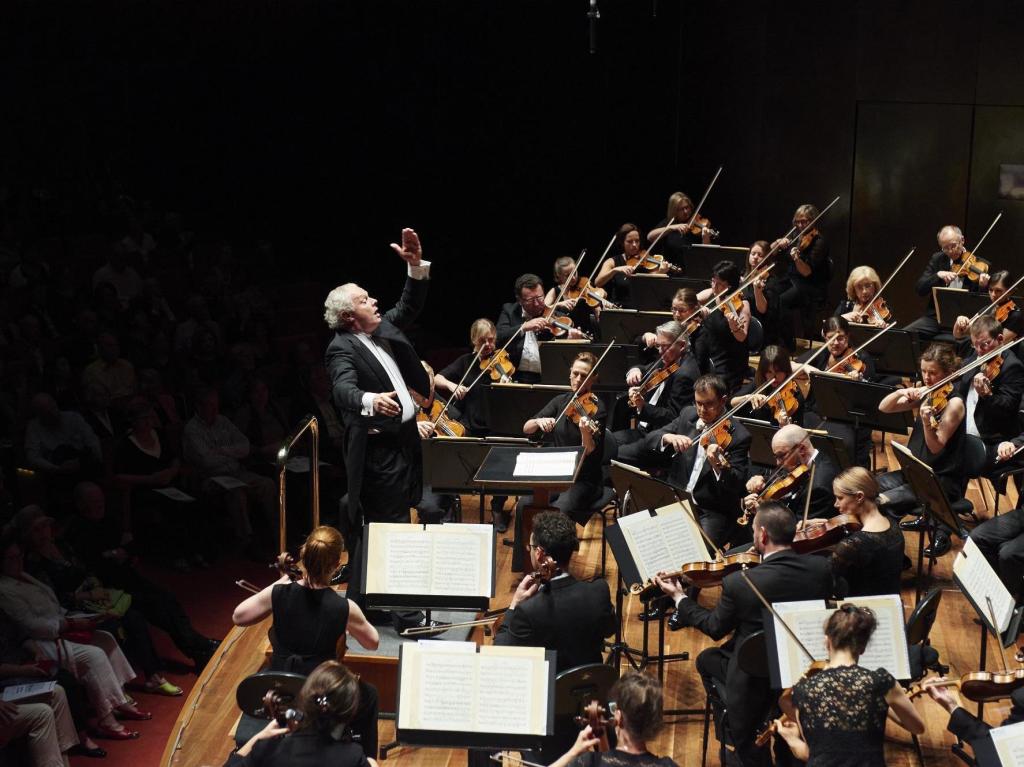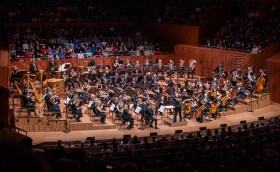MSO’s Sibelius Finlandia concert. Photo by Tim O’Connor.
What better reason could there be to celebrate wonderful music than to play the works of two icons of Scandinavian music, Jean Sibelius of Norway and Carl Nielsen, Denmark, on their 150th anniversaries.
When Sibelius wrote the famous Finlandia OP26 in 1899 it was, ostensibly, a focal piece to raise money for the Finnish Press Pension Fund to raise support for a free press in a move against the dominance of Tzarist Russia. Stirring music has always raised spirits as, recently, the voices of the French people united to sing The Marseillaise in response to attacks upon their freedom of the press.
Serendipitously, it was a French conductor, Yan Pascal Tortellier, who revived that spirit once again with the performance in Melbourne. Using his arms in sweeping movements and his legs in leaps of exultation, Tortellier led the MSO to victory from the first, almost sinister drum rolls in the timpani to the brass with those wonderful horns leading the momentum to include the powerful woodwinds and, finally, the familiar theme delivering the passionate climax. It would be good to see Australian audiences stand as well as clap and cheer when a performance deserves a little more. Perhaps the Proms next year will bring some to their feet.
Nielsen’s concerto for Violin and Orchestra, Op33 was composed a little later than Finlandia, in the summer of 1911 when Neilson was far removed from any conflict and able to create a contemplative, languid piece that Ronald Vermeulen, MSO Director of Artistic Planning in his pre-concert talk, felt could be appreciated in a home environment. This was possibly due to the fact that, through the generosity of Edvard Grieg’s widow, Nielson was able to write the early part of the concerto in Grieg’s studio by the lake in Troldhaugen, Norway.
An accomplished violinist himself, Nielson was challenged by the idea of including a specific violin solo in a complex concerto format but he achieved his goal admirably. The slow, calm largo at the beginning of the first movement gave German violinist, Kolja Blacher, all the time he needed to show his breathtaking virtuosity and link it, seamlessly, to an exuberant polonaise, with the addition of big brass sounds, sweet flutes and woodwinds. By contrast, in the adagio opening of the second movement, it was the combination of oboes, flutes and horn that provided the backdrop to the exquisite Cantilena melody which Blacher produced with complete mastery. The notes were delivered with crystal clarity, not only by the wonderful acoustics of Hamer Hall, but also by the instrument on which Blacher played, a 1730 Tritton Stradivari. Previously I could not have professed to know the difference between one violin and another, but now I surely do.
Sibelius was also a romantic and had an interest in Nordic mythology, which led to him putting the tragic tale of Lemminkainen to music. The first slow movement of ‘Swan of Tuonela’ was exquisite and allowed the cor anglais to glide you along with the mystical swan. Other instruments like the bass clarinet and ever-beautiful harp also came into the limelight , before the exuberant strings delivered the dramatic middle section and, finally, with admirable control from the timpani, the joyful re-birth of Lemminkainen.
Sibelius had become a national hero and, on his 50th birthday, a national holiday was named after him. However, it was accompanied by a commission from the Finnish government to write a symphony.
Sibelius, at the peak of his prolific career, was also disturbed by the emergence of The Great War and his own shifting moods. Thus it took several years to finish this exhilarating masterpiece in which the many melodic fragments could be said to represent passages in his life. Called Sibelius’s 5th Symphony: ‘A Song for Swans,’ they are represented in the opening horn call and again in the passionate finale that brings waves of goose bumps from the theme’s three notes repeated by trumpets and trombones and followed by the six strikes known as Thor’s Hammer.A magnificent way to celebrate a birthday!
On his death, Sibelius was feted, yet again, with a state funeral, an example, Ronald Vermeulen, MSO Director of Artistic Planning suggested in his pre-concert talk, that many countries today could follow.
Rating: 5 out of 5 stars
Sibelius Finlandia
Hamer Hall, Arts Centre Melbourne
Presented by Melbourne Symphony Orchestra
Conductor: Yan Pascal Tortelier
Violin: Kolja Blacher





